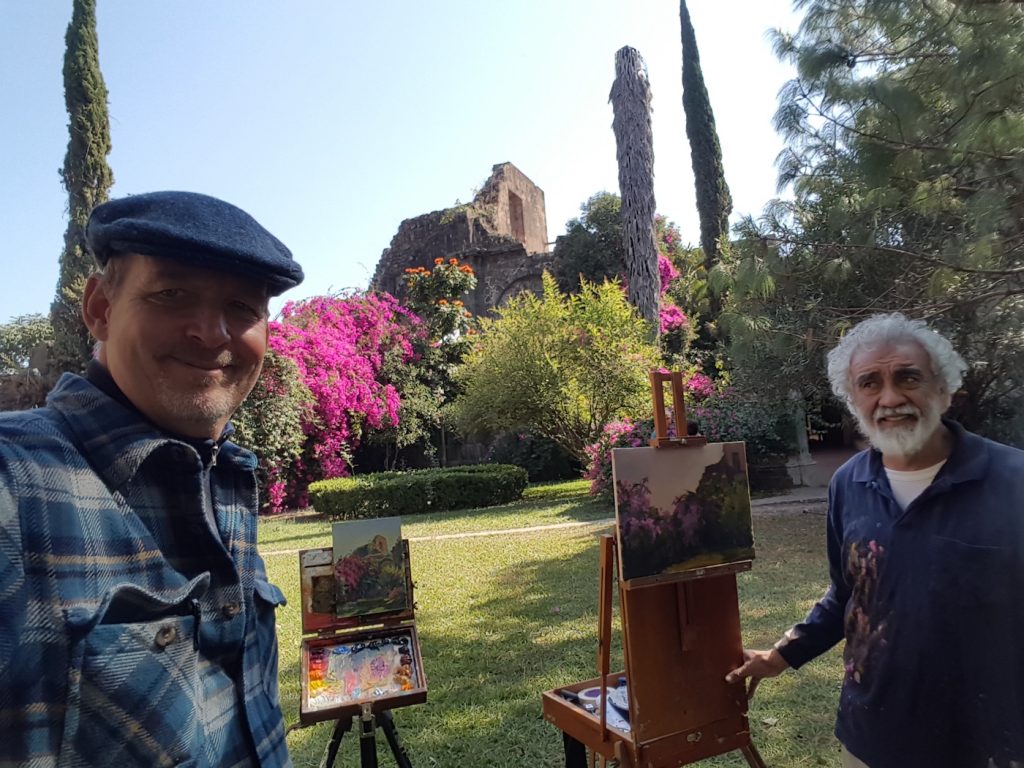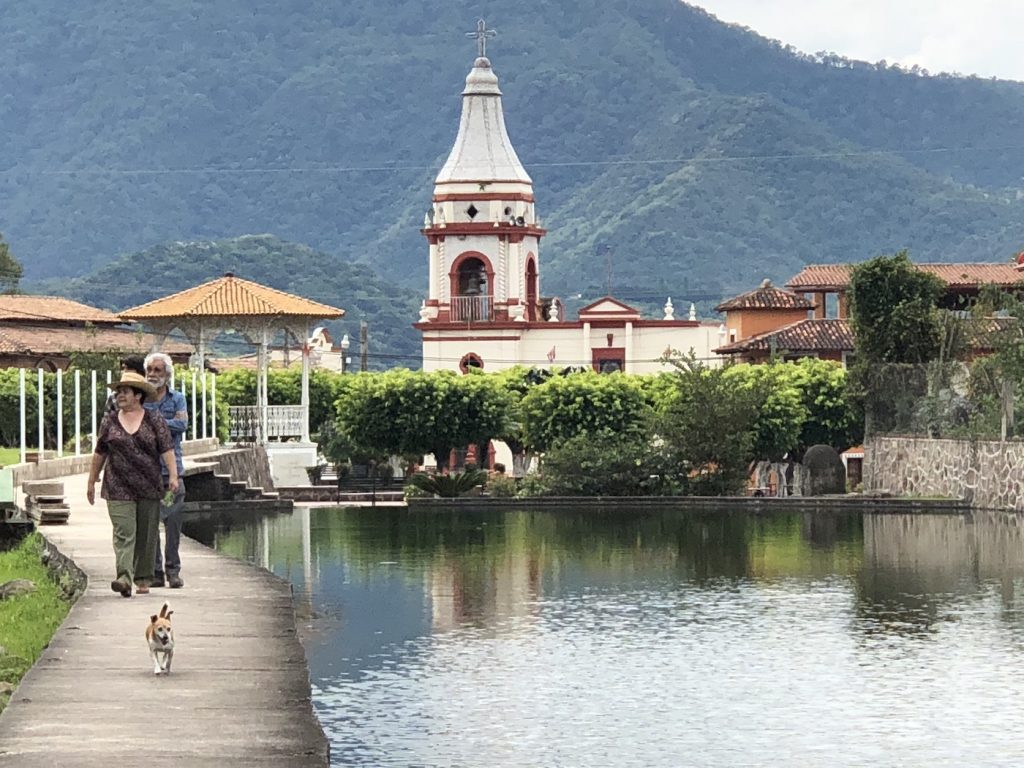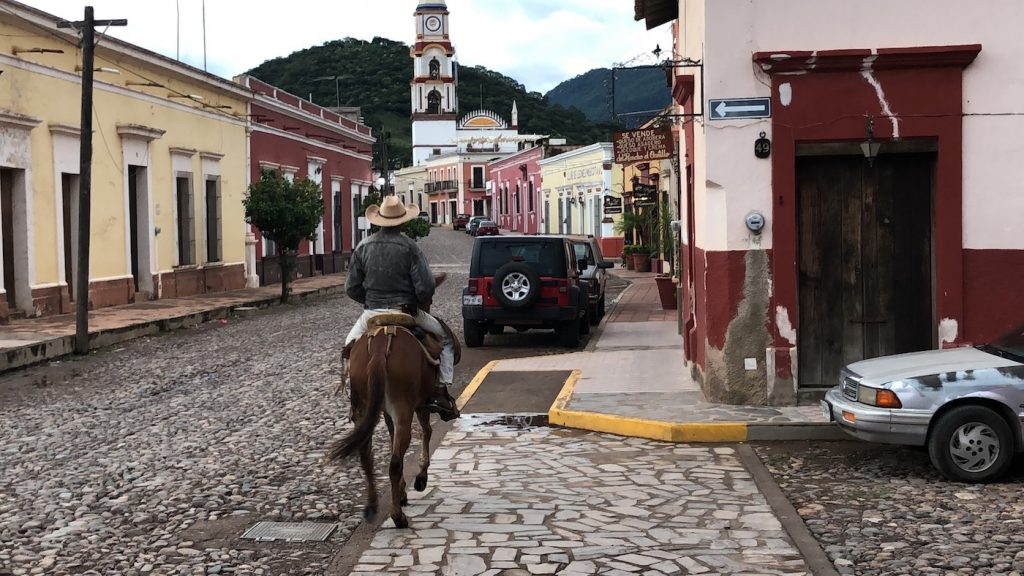Letters to the Editor
Just Another 101 Fable
J.B.’s editor’s note in last week’s issue re “Failure to widen the 101 in 1993,” reminded me of my 25-year issue on this subject as a retired commuter. So here it is in the following:
Another Fable from Santa Barbara County Association of Governments, SBCAG – Updated.
In the News-Press for Friday March 17, 2017, there appeared another fable about the final widening of the last 10 miles of 101 south of Santa Barbara. Now the SBCAG story has it that the official widening will begin in 2019. For the past 40 years we taxpayers have been paying extra sales tax on Measures D and A so we could have 101 widening as soon as possible, but it never happens, due to opposition from the ne’er do wells in Santa Barbara and Montecito. Each time, the cost grows from $138 million to today’s $500 million. So here we are with another projection of the “maybe start” of the final program in 2 years. Just why should we believe this date any more than in the past? We should not. 101 is a national highway, not a Montecito alley. Millions of citizens go without adequate, safe, and rapid transportation because of the lack of 101 widening.
While we waited in the South County for some progress, the North County has widened 101 at Santa Maria, widened the Santa Maria River Bridge and built the Union Valley parkway and 101 interchange. They are all completed projects while South County is still thinking about what it wants to do.
At the same time, there is a dire need for better roads in the North County that are not being filled because of this one South County project and its many delays.
Lompoc has 12,000 commuters daily, 7,000 of which go south to 101 on 1930s roads on Highway 246 and Highway 1, while about 1,000 commute to the North County. These commuters need a modern, safe road from Lompoc City limits to Domingos Road, a distance of 13 miles, where it meets an existing seven-mile parkway to Buellton and 101. A four-lane parkway is needed using the Caltrans owned right of way on 246. A five-mile-long widening of 246 at Tularosa Road was completed and opened in 2018 after 20 years of delays by Caltrans. So, only eight miles need to be widened and two bridges improved to make a modern parkway connecting Lompoc to 101 for these thousands of commuter who use it every day.
Instead of waiting further years until South County gets its act together, Caltrans and SBCAG must divert about $30 million to meeting the urgent needs of the North County as they did in the past with the earlier North County widenings. It is totally selfish to hold up the other projects while doing nothing with the one big one in the South County.
Our county and city representatives need to take action to make this happen or is this another fable?
Justin M. Ruhge
Lompoc
(Editor’s note: We should add that the “completion” date for the 101 expansion through Montecito is… wait for it… 2030! And, judging by past performance, we should be so lucky. – J.B.)
Biggest Little Parade
Longtime Village Fourth committee member Nina Terzian graciously hosted a Village Four Fun Raiser at her beautiful beachside home in Montecito. Tickets were on a donation basis, and guests were treated to a lovely spread of iced shrimp, C’est Cheese festooned platters, and delightful deserts. Supervisor Das Williams bought a ticket and joined the festivities. The Village Fourth is our community’s unique, patriotic salute to our country, followed by a picnic lunch and family fun in lower Manning Park. World famous as the Biggest Little Parade ever!
The fun begins at the firehouse on San Ysidro Road at 7:30 in the morning on July 4th, when nearly all of Montecito assembles for a firehouse breakfast of sausages, eggs, pancakes, orange juice, coffee, tea, and friendship. At 10:30, people begin to gather further down San Ysidro to just north of School House Road in Upper Manning Park to put their parade “floats” in order. The parade itself kicks off at 11:30 and is generally over by noon; then the concessions, music, and games kick into gear in Lower Manning Park. See you there!
Sharon Byrne
Executive Director
Montecito Association

Tecolote Teaser
Just a reminder to join me on Saturday afternoon, June 29, at Tecolote Book Shop in Montecito’s upper village from 3 pm to 5 pm to celebrate my newest novel, The Girl from the Lighthouse. Come support our local bookstore and enjoy some summer rosé and light hors d’oeuvres. Bring your copies of The Girl from the Lighthouse to be signed, or buy copies at Tecolote to support our local independent bookstore.
I’m looking forward to seeing you there.
Willard Thompson
Santa Barbara
(Editor’s note: Readers should also know that Mr. Thompson is author of Dream Helper, A Novel of Early California, Delfina’s Gold, Keepers of the Light: The History of the Point Conception Lighthouse, and other excellent books. – J.B.)
Mascota Magic
Thank you for the print in last week’s MJ letters section and helping to share the magic. And, there is something romantic and nostalgic about visiting a town steeped in traditional Mexican culture, where the locals appreciate their rich heritage and warmly share it with the world.
Mascota is a best-kept secret; it is a like a microcosm of (now, what is unfortunately over-populated) San Miguel de Allende. Mascota is located 60 miles east of Puerto Vallarta (one of Santa Barbara’s seven Sister Cities), in the Provence of Jalisco. It is safe and easy to access. There are ample, stylish upgraded hotels and restaurants serving excellent food and filtered water!
It was voted Mexico’s most magical town four years ago. The workshop is in an enchanting setting, in a valley surrounded by mountains and golden light, much like that which falls on charming Montecito.
Mascota’s small-town charm and its inhabitants are happy, good-natured people who like to smile, and who appreciate being alive in their own timeless culture. From spring through fall there are weekly festivals, fireworks are abundant, cowboys and horseless carriages share its cobblestone streets. The valley is known for producing its own form of Tequila, known as “Raicilla” created from a form of Agave grown only in the valley of Mascota.
National Geographic opened a museum in Mascota, to house the 5,000-year-old relics discovered in nearby mountains. Visitors can take tours to view the digs; viewing hidden petroglyphs adorning rock formations in the nearby foothills while butterflies, and colorful birds share the sky overhead. There is a rich abundance of paintable subject matter everywhere you turn.
Hope you can visit Mascota. If you take my workshop, during the dry season in January 2020, I can teach you how to paint (or at the very least how to hold a brush!). You won’t get bored!
Thomas Van Stein
Santa Barbara
(Editor’s note: You neglected to mention how someone may join you, so: For more information, go to: thomasvanstein.net/mascota-workshop, email: thomasvanstein48@gmail.com, or call 805-962-2776.)



May the Bugs Prosper
In reference to last week’s letter (“Ladybug Litany,” MJ # 25/24) and your response about loving “the idea and image of a ladybug cloud,” it occurs to me that ladybugs and fireflies have good PR. We teach children not to fear or harm them. Ladybugs have been used to control the balance of nature since hunter-gatherers became farmers.
Nature is opportunistic. Ladybugs do not fly far but are carried on the wind, much like locusts, and they gather in numbers when food sources are plentiful. Bugs are a plentiful food source for birds which attract rodents and larger animals that feed upon them.
Farmers have successfully grown cannabis in California without chemicals for generations. If one farms for profit, beneficial insects are essential. Corporations farm for a write-off with little long-term vision; wiping out the little buggers with pesticides insures big profits for chemical companies. But it also wipes out the beneficial nematodes in the soil that allow harmful nematodes to flourish. It’s not easy playing God and keeping everything in balance.
If we are to avoid the lessons of the ten plagues of biblical fame, don’t mess with Mother Nature. Once a field is salted, few food crops can survive. Chemicals change the PH in the soil. Beautiful birds don’t look as beautiful when people are starving.
Karen Friedman
Santa Barbara
A Day For Old Glory
Wanted: You, your neighbors, veterans, friends, and youth to proudly wave a U.S. flag from Micheltorena downhill on State Street to Cota in the Downtown 4th of July Parade. Come celebrate freedom! If you don’t have a flag, no worries. U.S. flags of all sizes have been donated.
All we need to know is to count on you July 4th, and to know if you need a U.S. flag, or can bring your own flag.
RSVP via text or call to parade entry organizer: Rhonda (805) 259-6097.
Please wear a white shirt or t-shirt, with blue or white pants, or blue jeans. Our goal is to make the mass of U.S. flags the entry’s focal point as we celebrate our shared good fortune to live free in America.
Children and teens are encouraged to join us to carry flags and ring freedom bells. Those on “Decorated Wheels” red-white-and-blue wagons, strollers, trikes, and bikes will follow walkers.
Please spread the word to neighbors, co-workers and others to find two hours to walk and wave Old Glory in this year’s Downtown 4th of July Parade. Meet at noon at State Street and Micheltorena.
Our flag symbolizes the great sacrifices for freedom made to enable each of us to live with constitutional protections and rights. The American flag’s meaning is shared in a personal way based on each of our unique family histories.
In the 8-year-long Revolutionary War (1775-1783), George East and his wife Catherine Sinn’s great grandfathers and uncles served to win our independence from the British. (Family histories can be traced at our local genealogy society library: 316 Castillo.)
Daily I view the framed portrait of my great grandfather, George East, from the Indiana Volunteers, who was honored to carry our flag in the Civil War Battle of Antietam (23,000 casualties, Lincoln’s Preliminary Emancipation Proclamation) and Battle of Gettysburg in which the brave color guard soldiers in both battles protecting our flag were killed or mortally wounded for freedom. The ragged badly damaged flag East carried in both battles with East’s handwritten diary are in the Civil War Museum. He wrote after recovering from major wounds, and upon return to his unit, his peers happily greeted him with “my saved flag,” to then be carried in future battles.
Every July 4th is a good time to again reflect on our country as symbolized by our flag and national anthem inspired by our flag, as we celebrate the freedom we are each privileged to enjoy. The Second Continental Congress passed the Flag Resolution on June 14, 1777, establishing the first congressional standard for an official United States Flag.
In addition to celebrating Montecito Village Fourth events, please join us on State Street to proudly wave our flag!
Denice Spangler Adams
Montecito
Pursuing Water Security
The current Board of the Montecito Water District was sworn in roughly six months ago. It has been a very busy and productive period for the District. We are making steady and strategic progress toward water security. I would like to update Montecito and Summerland on the actual decisions made thus far by the Board and provide an overview of the issues we will be tackling in the fall.
The current members of the Board were elected to increase the resilience and reliability of the water supply for Montecito and Summerland so that we could withstand future droughts without resorting to meter bans, quotas, and/or severe penalties. With water security, we can ensure the essential character of our communities and protect property values, even in prolonged droughts.
For those who have attended recent Board meetings, there can be no doubt that the current Board takes its responsibility very seriously. Our meetings are lengthy, characterized by vigorous discussion and cordial debate that leads to well-reasoned decisions.
First, with regard to strategically pursuing water security, the Board has made several important decisions during the past six months. First, we have approved a term sheet to purchase water from the City of Santa Barbara (i.e., the “Desal Agreement”). We are now in the final stages of drafting the Desal Agreement. If signed and implemented, this Agreement would largely drought-proof the District by providing roughly a third of our annual supply.
Second, we have approved a series of near-term technical studies to determine the most feasible and cost-effective wastewater recycling project(s) in Montecito. We have formed a joint committee with the Montecito Sanitary District to gather data to support these studies and begin planning for potential project(s) that would further drought-proof the District while protecting the environment. This joint committee has met several times and the level of cooperation between the two Districts is unprecedented.
Third, we have formed a Groundwater Sustainability Agency (GSA). The GSA has begun work on a Groundwater Sustainability Plan to ensure that groundwater will be available when needed for the benefit of the entire community. There will be extensive community outreach as we develop this Plan.
Fourth, we have continued to “bank” water in underground storage while paying off the last water debt incurred during the drought. This has improved the District’s financial condition as well as its preparedness for the next prolonged dry spell.
With these actions underway, and with the benefit of a wet water year, we have a favorable three-year supply outlook. The Board, therefore, has eliminated the ban on new water meters while maintaining various conservation measures within the District. With a continued conservation ethos and new resilient and reliable water supplies coming online, the District is positioned to meet actual customer demand and withstand prolonged droughts.
There have, of course, been arguments made against the actions taken by the Board. There are members of our community who believe that the recent drought was an aberration and future precipitation will meet our water supply needs. I disagree, and I believe my colleagues on the Board do as well. Relying on weather patterns from the mid-20th Century to predict weather in an era of climate change is not only misguided, it is precisely the type of thinking that caused the water emergency declared by the prior Board in 2014.
When we face substantial precipitation shortfalls locally and in the Sierras, others have argued that we can meet our needs by buying water in the supplemental water market, as the District did throughout the drought. There are two problems with this position. First, it assumes that there will be a functioning supplemental water market during the next drought. This is almost as big a gamble as relying on precipitation for our water supply. With groundwater depleted across much of the State and new groundwater regulatory agencies coming into force, there is little reason to believe that there will be abundant supplemental water when there is little or no snow in the Sierras and little or no rain on the South Coast.
Second, even if supplemental water were to be available during the next drought, we would be gambling that the District would be able to obtain enough of it at an affordable price to meet our needs, factoring in the onerous repayment in-kind obligations that come with such purchases. Indeed, even with supplemental water purchases, the District implemented meter bans, quotas and penalties to manage the last drought. We should not expect better results in the future. In my view, the uncertainty and potentially high costs associated with supplemental water purchases during droughts make this an unattractive strategy going forward.
Lastly, a handful of residents have raised concerns regarding the costs associated with the actions the Board is taking to increase our water security. To a large extent, these concerns are premature. We have not finalized the Desal Agreement with the City, nor have we committed to any specific recycling projects. The preliminary cost estimates for these potential initiatives, moreover, do not include grant funding offsets or the cost-savings that would come from eliminating our dependency on supplemental water. But rest assured, we are carefully considering potential costs. We are currently conducting a comprehensive rate study to determine the potential rate impacts of adding new water supplies in various amounts.
Once we have this data, the Board will subject our water supply initiatives to rigorous cost-benefit analysis, and public input will be welcomed. Although it could be tempting to focus solely on costs during this analysis, I believe we must articulate and appropriately value the benefits of new water supplies, which include dramatically reducing our vulnerability to drought, eliminating the need for future meter bans, quotas, penalties, and protecting our ocean and beautiful beaches. These benefits will not only improve our quality of life, they will protect our property values as well.
It has been an honor and a privilege to work on these issues for the residents of Montecito and Summerland for past six months. The diligence and seriousness of the Board has been evident since we took our oaths, and I am confident that we are positioning our communities for a resilient future, just as we promised during the last election. But you don’t have to take my word for it. Please attend one of our upcoming Board meetings and see for yourself.
Please note: The opinions expressed in this piece are my own, and I do not purport to speak for other Board members.
Brian C. Goebel
Director, Montecito Water District
Senator Fauxcahontis
Sins that would have torpedoed any person on the right are calmly and smugly glossed over when committed by a representative of the left.
A Democrat activist and agitator posing as a “journalist” on the paid staff of The New York Times writes a long and tedious piece even by the Times standards on the “seriousness” of Senator Elizabeth Warren’s effort to break out of the pack in that Cattle Call referred to otherwise as the Democrat Presidential Primary.
A typical Op-Ed piece runs 800-to-950 words. This woman journalist used more than 8,000 words to tout Warren’s resume and biography. It is a length more expected in Vanity Fair or The New Yorker than a daily newspaper.
Ask any political junkie reasonably attuned to presidential politics 500 days out from next year’s general election, and they’ll probably tell you the most defining feature attached to the Warren profile is her fixation and infatuation with passing herself off as a Native American: Cherokee, to be exact. She even had the chutzpah to submit entries to a Cherokee Indian Cookbook.
This has been no fly-by-night, seat-of-the-pants operation, something she fell ass-backwards into at a moment of opportunity. Her desire to take advantage of affirmative action programs in order to propel her to the head of the queue for cushy academic jobs was deliberate, conscious and premeditated, not to mention tacky, unethical, illegal and immoral. Forms had to be filled out, details provided and signatures affixed to disclaimers that said providing false information could lead to an indictment of perjury.
She reached high positions at Harvard Law School and University of Pennsylvania on the fictitious premise she was something that she wasn’t. From there, she leveraged her fame and celebrity status to run for a safe Democrat seat in the U.S. Senate from the Commonwealth of Massachusetts, a perch she can call home as long as her body temperature maintains a constant level of 98.6 degrees.
Friends, Romans, Countrymen: The career of Elizabeth Warren has been mounted atop a massive, scheming fraud. So much so, it’s reasonable to extrapolate back to the genesis of her pyramid-building that were it not for the falsehood surrounding her ancestry, Americans would not be talking today about Elizabeth Warren for President.
Getting back to The New York Times 8,000-word press release for Senator Warren, the subject of her self-inflicted scandal which is responsible for us even considering her candidacy, is mentioned in one paragraph covering 173 words, for a total 2.1% of the whole article.
Is Elizabeth Warren the only person who has imagined herself as something she isn’t? Heavens, no. We all do at one time or another to some extent. Most of the dreaming comes about in our youth and adolescence. It usually involves something we can aspire to honestly. In a classless, upwardly mobile, (mostly) color-blind society, we can engage the notion of being just about anything we wish, even dream about becoming President of the United States of America.
There are no boxes we need to check off to be a registered nurse, a surgeon, a trainer of thoroughbred horses, just a mixture of overwhelming desire, discipline and hard work. But, that’s all different from what Elizabeth Warren did. She wished to exploit a federal government mandate, authorized and legislated by the peoples’ representatives to give favored treatment to certain protected classes of people for prestigious jobs and work assignments as a form of reparations and restitution for mean-spirited past actions directed at people in these groups.
Have you ever watched a driver of an automobile parked in a handicapped zone get out and walk into a store, and say to yourself “He doesn’t look disabled, or handicapped, to me”? Apart from being grossly discourteous to approach a stranger and demand to know how it is he warrants a handicap sticker, it’s illegal to ask him, to boot!
Somewhere along the line, it occurred to Elizabeth Warren she could leverage the “high cheek bones” that someone said made her look like an indigenous member of the Cherokee tribe to leap-frog over the competition for scarce and lucrative slots in higher education establishments. She may have to fudge, and lie, here and there along the way, but, who really is going to challenge her? These liberal inclusivist institutions are just dying to break their collective arms patting themselves on the back by proclaiming to the world they’ve checked off another box by hiring a Native American professor, or high-paying administrator.
Everybody allowed Warren to get away with her little charade, which she parlayed into fame, fortune, glory and celebrity status, until Donald Joseph Trump came along and – if this were Texas Hold ’em – called her on the river.
Were this a courtroom drama, Warren’s attorney, upon hearing the prosecutor wanted to address Warren’s life-long caper of posing as someone she isn’t, might leap up and yell “Objection, Your Honor, relevance”.
At which point, the prosecutor responds: “Your Honor, it goes to character.”
Senator Elizabeth Warren doesn’t pass the Character Test to be President of the United States.
David S. McCalmont
Santa Barbara







